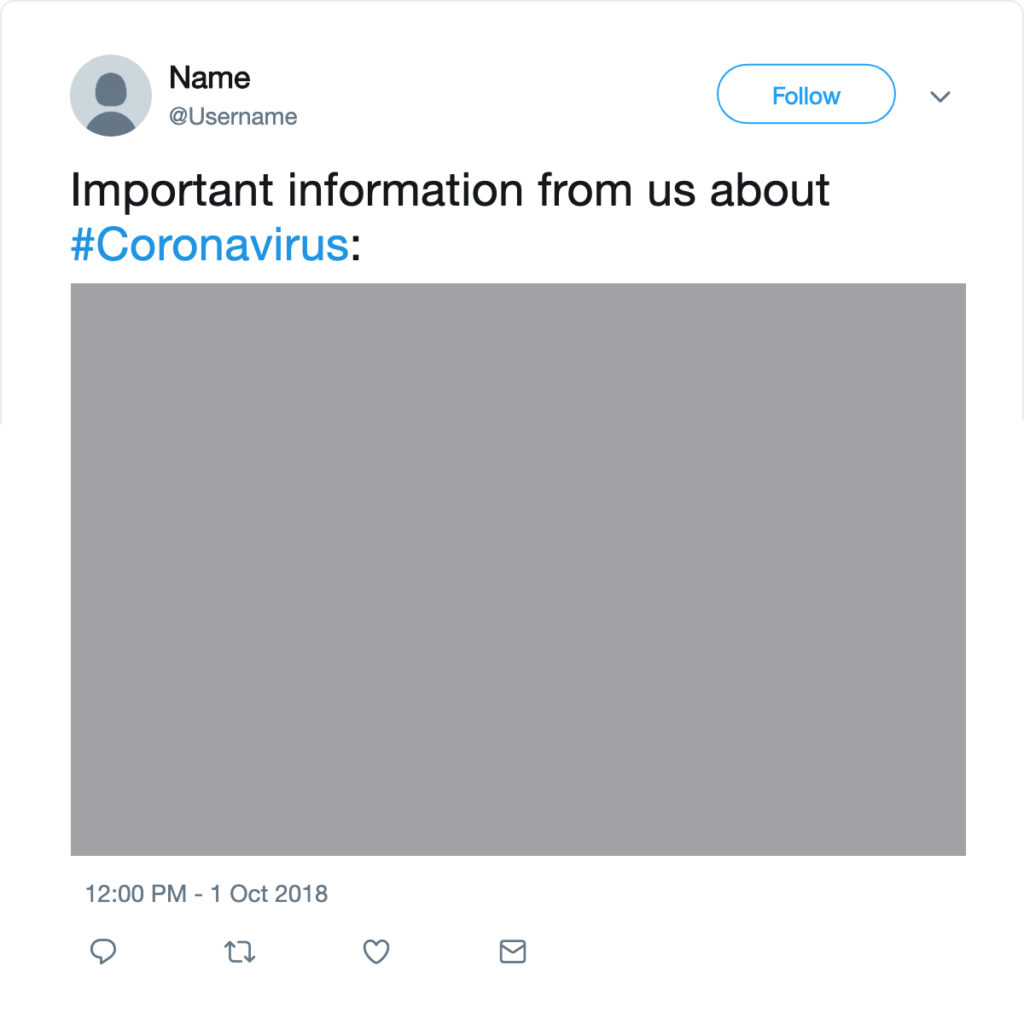Back at the beginning of the pandemic, me and Madeleine Sugden noticed a worrying trend. Key messages from companies about their pandemic response were being shared as graphics filled with text. This was being done to fit as much information in one place as possible, particularly on Twitter where the character limit restricts how much can be said in one tweet.
Whilst I’m sure many people found the graphics helpful, a group of people were being excluded every time a company posted one. Screen-readers, mostly used by people with sight issues, can’t read text graphics and so were immediately excluding people with disabilities from accessing that potentially important information. This is what it can look like to those who use screen-readers:

In response, we set up @CovidAccessInfo, a Twitter account designed to speak up for those people who use screen-readers, and remind businesses that their content should be accessible to all. Some listened, apologised and responded by offering accessible content, some dismissed and ignored our requests.
Nearly a year on and most Covid specific messaging has become part of regular communications in social posts and web content. But the issue of inaccessible information in text graphics continues. Over the last few days, a number of organisations have chosen to respond to issues with a statement in a graphic with no other way of reading it.
Social media channels prefer posts with images and so sharing a branded message that can be posted quickly on a number of channels will always be the go-to response, but there are ways of making sure our response is inclusive and accessible.
Here’s a quick guide on what to do:
- If it’s under 280 characters, post it to Twitter as a standard tweet, particularly if it’s a reply to someone.
- Turn it into a thread if it’s longer than 280 characters
- If you still want to include a text graphic, make sure the text is available alongside it. You can link to a webpage, add it as a thread underneath or alongside it, if you have a longer character limit.
- Text graphics shouldn’t be posted on their own with no accompanying text.
- For images, use the alt-text option that most social channels now have to describe what’s in the image.
- There should be a strong contrast between text and a background on a graphic. Choose a large font and keep the text short and simple. Complicated language can also exclude people.
Want to learn more about accessibility on social media? Helpful Digital have written a really useful guide on the subject.
If you see a business posting text graphics without any consideration for accessibility, let them know. You can point them to this blog, or the Helpful blog linked above.